A couple weeks back, everyone at Wonkomance got happily tangled up in an email thread about the 1979 V.C. Andrews book, Flowers in the Attic, in the run up to its reincarnation as a Lifetime movie. It seemed like everyone had read it way back when they were tweens, except for me! I started it that very afternoon.
 This isn’t a book report post, so I won’t synopsize aside from saying the book’s pretty fucked up, for what it is, and I enjoyed it quite a bit. If you want a more in-depth analysis, I think Shari may be planning one. Stay tuned.
This isn’t a book report post, so I won’t synopsize aside from saying the book’s pretty fucked up, for what it is, and I enjoyed it quite a bit. If you want a more in-depth analysis, I think Shari may be planning one. Stay tuned.
It was kind of cool, reading this story for the first time at thirty-four. I could imagine reading it at twelve and being SCANDALIZED. And also FASCINATED. (I mean, Forever is totally vanilla in comparison, and that had been my naughtiest read at the time, rendering the Babysitters’ Club unpalatably tame forever after.) But reading FitA as an adult, and as an avid consumer and producer of smut, I could spot all the shocking reveals coming miles off. Plus, once you’ve read George R. R. Martin, no brother-sister coupling is ever going to supplant the Lannisters.
Truly, the thing I found most disturbing in the entire book is the scene where the older brother has the younger children drink his blood, to build their strength in preparation to escape the attic. (More on softcore cannibalism shortly.)
What reading FitA really did do for me, however, was remind me precisely what a perverted time of life childhood is.*
Nobody talks about children as sexual beings in our culture, because that in itself is somehow a sign of perversion. But we totally are sexual, and long before the point at which we know what sex is. Long before we have any interest in nudity or intercourse, years before we even hit puberty. I’m not talking about anything to do with others’ genitals or reproduction or romance. I’m talking merely about that visceral magnetism, divorced from what adults identify as sexual content or circumstances. I think we all possessed that, in childhood. I know I did. And since it arrives so much earlier than our attraction to potential sex partners—spurred instead by any number of strange stimuli—that formative magnetism just winds up seeming sort of…kinky.
As a kid, I was always drawn to the really dark, twisted scenes in movies. The revulsion response must share a lot of capillaries with arousal—some medical professional back me up on that. Like, while the Wheelers were the part of Return to Oz I dreaded the most, they were also the part I secretly anticipated with the most fervor. I loved creepy shit like that, even as it made my skin crawl. The closer something tread to that slippery line separating disgust and fascination, the more enraptured I became.
There are two cartoons I remember consuming me, circa kindergarten. Both featured pigs, and both were sort of off-market, if I recall correctly**, not starring name-brand characters. They were rare, shown way less frequently than the usual Roadrunner or Tom and Jerry installments. But they positively burned themselves onto my pre-sexual psyche.
The first one was about this pig who’s fishing at a lake, and falls asleep. He has a vivid nightmare in which a fish yanks him into the lake by the line, and proceeds to prepare the poor pig-fisherman for roasting and eating, including removing his clothes with a knife in a way that mimicked skinning, placing him in a baking dish, surrounding him with sliced vegetables, and putting him in an oven. The pig is—understandably—terrified. I, at perhaps four or five years old, was less understandably MESMERIZED. My little brain was like, “Dude, this is SICK. And it’s making me feel kinda funny. I really hope they show it again.”
 The other mesmerizing cartoon featured a different pig, and I’m less clear on the details. (I know it was real though, as The Simpsons once referenced it.) He was a greedy pig, if I recall correctly, and this story was a sort of morality tale. The gluttonous pig is tricked and captured and subjected to what I can only describe as a force-feeding torture factory. The mad scientist villain straps the pig into this moving chair, including a metal band around his snout, and forces it to eat all manner of food, with the implicit purpose of fattening it up to be eaten (I think, or maybe my perverted young imagination layered that threat in.) Again—MESMERIZING. This cartoon was straight-up sadistic. Because, like the first cartoon, it featured a pig with human traits (clothes, speech) it had a distinctly cannibalistic taboo going on. And at an age when you’re still fairly sheltered from the horrors of humanity, cannibalism is about the grisliest thing you can conceive of. [Perhaps unsurprisingly, I was also fascinated by the story of Hansel and Gretel.]
The other mesmerizing cartoon featured a different pig, and I’m less clear on the details. (I know it was real though, as The Simpsons once referenced it.) He was a greedy pig, if I recall correctly, and this story was a sort of morality tale. The gluttonous pig is tricked and captured and subjected to what I can only describe as a force-feeding torture factory. The mad scientist villain straps the pig into this moving chair, including a metal band around his snout, and forces it to eat all manner of food, with the implicit purpose of fattening it up to be eaten (I think, or maybe my perverted young imagination layered that threat in.) Again—MESMERIZING. This cartoon was straight-up sadistic. Because, like the first cartoon, it featured a pig with human traits (clothes, speech) it had a distinctly cannibalistic taboo going on. And at an age when you’re still fairly sheltered from the horrors of humanity, cannibalism is about the grisliest thing you can conceive of. [Perhaps unsurprisingly, I was also fascinated by the story of Hansel and Gretel.]
Both of these cartoons were immensely cruel as well, showing the pigs suffering from sheer terror. I can only describe the horror-thrill of them as some early equivalent of what one might feel while reading or watching a fictional rape scene. Terrified. Nauseated. Disquietingly titillated.
Though I had no idea at the time, those two cartoons functioned as the first pr0nography I’d ever see. I wished so hard for them to be aired, it was akin to praying. I replayed and adapted them in my head, spurred by the resulting underpants feelings, but also sensing it was not polite, my infatuation with them. I sensed as well, there was something new and exceptional about the way those cartoons made me feel. And small wonder that they did—they were packed with the dynamics that characterize so much of the power-play kink adults engage in. One cruel actor, one helpless victim, restraint, degradation.
 This reminds me of a story that my husband finds hilarious, about the first time I saw Mickey’s Christmas Carol. There’s an alternate reality scene in which Scrooge sees the mouse-Cratchits visiting Tiny Tim’s grave, and setting his crutch against the headstone. But my little-kid brain had forgotten about the crutch, and it jumped to the disturbing—but again, MESMERIZING—conclusion that the crutch was a bone of some sort, and that I was meant to infer that the Cratchits were so poor, they’d been forced to cook and eat their weakest child to keep from starving. Which is fucked up, and didn’t give me underpants feelings…but almost did. Maybe a little bit. I remember saying to my older brother, some days later, “Man, can you believe they put that in the movie? About the Cratchits having to eat their own kid?” And I’m sure his reply was a first-grader’s equivalent of, “The fuck you talkin’ ’bout, woman?” I only know for sure that I was disappointed to have the whole crutch thing explained to me. I’d grown quite enamored of my own sick interpretation.
This reminds me of a story that my husband finds hilarious, about the first time I saw Mickey’s Christmas Carol. There’s an alternate reality scene in which Scrooge sees the mouse-Cratchits visiting Tiny Tim’s grave, and setting his crutch against the headstone. But my little-kid brain had forgotten about the crutch, and it jumped to the disturbing—but again, MESMERIZING—conclusion that the crutch was a bone of some sort, and that I was meant to infer that the Cratchits were so poor, they’d been forced to cook and eat their weakest child to keep from starving. Which is fucked up, and didn’t give me underpants feelings…but almost did. Maybe a little bit. I remember saying to my older brother, some days later, “Man, can you believe they put that in the movie? About the Cratchits having to eat their own kid?” And I’m sure his reply was a first-grader’s equivalent of, “The fuck you talkin’ ’bout, woman?” I only know for sure that I was disappointed to have the whole crutch thing explained to me. I’d grown quite enamored of my own sick interpretation.
Probably for the best, my fixation on those two sadistic pig cartoons (and on all things vaguely cannibalistic) burned away as I stumbled onward toward a more typical puberty. Case in point, I don’t get turned on while eating ham. Nope, those old fascinations were replaced by other gross-yet-intriguing things, such as imagining mouth-kissing Fred Savage, and wondering what was up with David Bowie’s tight gray pants in Labyrinth. By the time I saw The Little Mermaid, my downtown feelings were strictly Prince Eric’s to inspire. That terrifying scene where the chef is planning to stuff and cook Sebastian the crab was merely alarming, not arousing. My seedling of a cannibalism kink never put down roots.
There’s no predicting perviness. We’re all just naturally creepy. Go with it. Write about it, if you can get away with that kind of homely honesty.
![]() If this post has any point—and it may not—it’s to say that sexuality is weird. And awkward and unpredictable, and can have little or nothing to do with actual sex. And it sprouts early, spurred by who-can-guess-what. I’d like to assume that all the people involved in producing those pig cartoons weren’t trying to make faux pr0n for budding sadists…
If this post has any point—and it may not—it’s to say that sexuality is weird. And awkward and unpredictable, and can have little or nothing to do with actual sex. And it sprouts early, spurred by who-can-guess-what. I’d like to assume that all the people involved in producing those pig cartoons weren’t trying to make faux pr0n for budding sadists…
Actually, I’m not so sure about that one with the force-feeding torture. That shit was seriously kinky.
*Please refer to the story “Next of Kin” in your copy of David Sedaris’s Naked.
**Addendum: After drafting this post, I looked up the pig cartoons. I wasn’t able to find video of the fishing one—called Fish Tales, from 1936, boasting Porky Pig’s very first appearance—but I did find an incredibly thorough blog post which described it (mostly) as I’d remembered. I did find video of the force-feeding one, which was a Merrie Melodies from 1937 titled Pigs is Pigs. I won’t link to it, as none of the streams I found looked especially copyright compliant. Turns out, the pig in that one wasn’t as terrified as I’d remembered—he was actually kind of into it. Also turns out his tormentor wasn’t planning to eat him, but toward the end of the cartoon, the pig eats one more bite and explodes. Then he wakes up, as this story, too, was all-just-a-bad-dream. (It also has precisely zero moral, as evidenced by a confounding ending.) I’m not especially sad to report that the cartoon did not stand the test of time for me, as erotic fodder goes. Unlike David Bowie’s tight gray pants in Labyrinth.




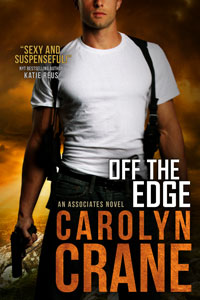
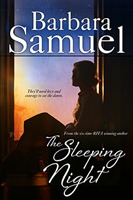

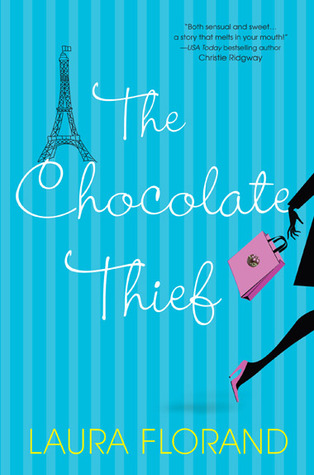
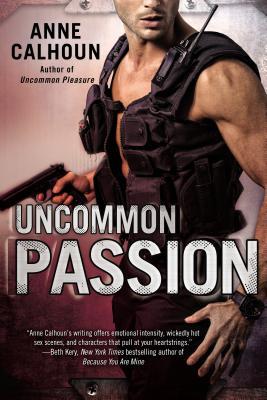
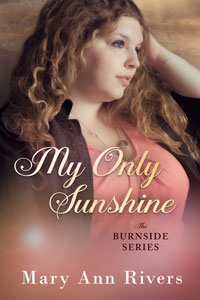


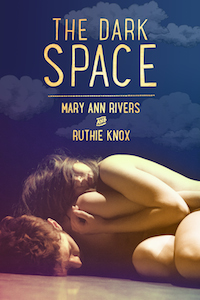


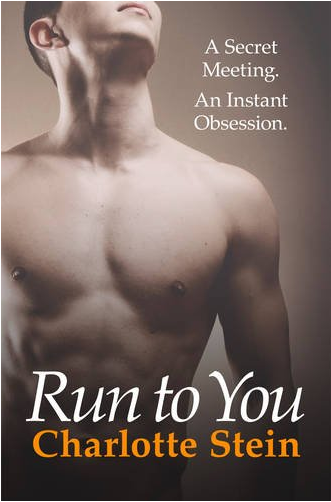
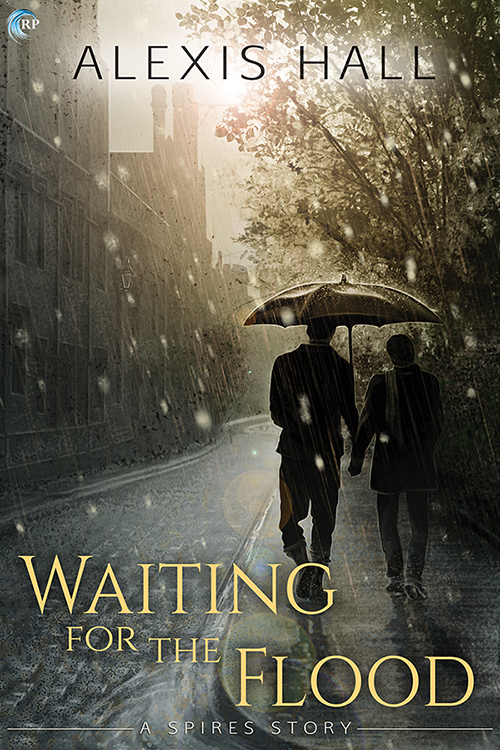

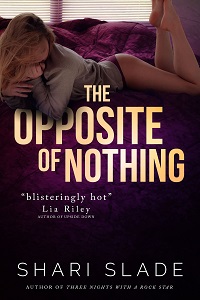
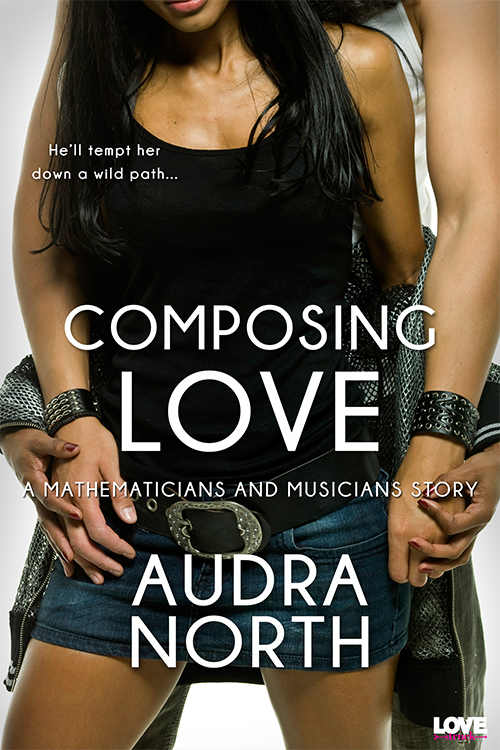


The idea of perversity is interesting, especially thinking about the child brain. I think the child brain is often what’d we’d think of as perverted, because it’s free to make associations our adult brains are sanctioned for. It’s like our societal norms and taboos beat the perversion out of us. Perversion, in some ways, is the brain trying to understand and name what it decidedly does not understand or have a name for.
Good point. It’s hard to say if those feelings can even be casually labeled “perversions” until we’ve been informed that we’re wrong to have (or enjoy) them, by an adult. Before then, they’re just feelings…if one can assume self-judgment is a learned skill.
Oh yes. The self-judgement comes hand-in-hand with all the things we’re not supposed to do or think or feel.
Let me guess—this especially applies if we possess girl parts, right?
Yes, special standards are applied for Vagina-Americans.
Really admire both the honesty and insight of this post, Cara. Kids really are sexual beings, and that sexuality can manifest itself in myriad unexpected ways. Thanks for sharing your own experiences to help remind us of this really important fact.
LOL, you make me sound so altruistic! But if hanging with erotic romance writers these past five years has taught me nothing else, it’s that any creepy thing you get tipsy and share about yourself in an overcrowded conference hotel suite will surely be echoed by everyone else in that room. And likely trumped. And even more likely trumped by the most mild-mannered, unassuming woman in the room.
Guess I haven’t been hanging out in the right conference hotel suites — will have to do something to remedy that…
As a sometime conference roomie of Cara’s I can confirm the ubiquity of the perv affirmations. And hey, c’mon over to our suite. You will hear ALL THE THINGS!
ALL the things. Things about elbow injuries. And things about complex sex positionings. With reenactments. And pistachios.
Hee! And diagrams. Don’t forget the diagrams.
I think it goes to show, too, how little our sexuality has to do with our genitals. Before we know what genitals are for, I think, stuff can ping there and it’s all just part of our visceral response. Then we get all these filters installed as we grow up, so by the time we get to FitA in middle school (most of us) we know those feelings are sexual, we know they are therefore forbidden, but we still haven’t shut them down enough to stop having them. That book encapsulated those feelings perfectly.
The scene from the series that really stuck with me as causing horribly conflicting feelings was the one where the heroine tried to take some small measure of revenge on her grandmother, who was by then near death and paralyzed, unable to speak or move (can’t remember if it was from a fall or a stroke or what). The heroine, who I wanna say was wearing a ballerina outfit at the time, inflicted various pains and indignities on the evil old woman…caning, flogging, gumming up her hair so it would have to be cut off. Humiliations galore. I was equal parts horrified at the scene because I knew I was supposed to be, and horrified at myself because I wasn’t remotely as put off as I suspected I ought to be (I grew out of the self-censorship, I’m happy to say).
The blood drinking? Eh, not so much with the forbidden feels. What does it say about me that even then I was like, “Oh, sure, cannibalism because it’s so practical. Whatever,” but got all conflicty when it came to the noncon bondage/discipline/humiliation scene? Wait, never mind, I know exactly what that says about me.
Yeah, I don’t know why the blood-drinking bit made my brow furrow! As shark-jumps go, that ramp was really shallow in the greater scheme of the book’s pervishness.
Your writing in this post comes very close to my Big Theory about why this book works so well for the 11-13 age group, which is basically about how FitA mixes sexual arousal and disgust very closely and sexual arousal and disgust are already mixed for pre-teens, and for good reasons.
I think we kind of *want* kids to be at least a little disgusted by sex, don’t we? That disgust reaction keeps them safe, in some ways. Because physically, even very young children can have orgasms, but there’s a damn good reason for them not to be sexually active. Then, when puberty begins, suddenly the physical reactions get stronger even as the disgust reaction hasn’t gone away yet. FitA makes explicit the combination of disgust and arousal that lots of kids that age are feeling/have felt for a while, but haven’t been able to articulate.
In that way, I think it’s actually developmentally appropriate for early teens to be so obsessed with that book. It means their disgust center is still involved in the arousal process. It grosses the hell out of us as adults, until we stop and think about how the brain works and how the brain and body are developing in fits and starts and aren’t always working at the same speed at that age. Then it makes sense.
This made me try to think of the entire book as some complex metaphor for childhood sexuality. Like the grandma is our puritanical society, making rules, and the locked room is self-repression, and the attic is our perverted imaginations, where we escape and get up to shit we don’t want polite society knowing about. Or something. And the bathroom is another thing, and so is the lake. And the mother is…our waning innocence. Or something. There’s a dissertation in there, somewhere.
I remember vividly that Fish Tales cartoon. It did inspire pull-push feelings of fascination and disgust, thrill and terror, and I too remember wanting it to come back on again. As college student I looked it up in order to satisfy myself that I hadn’t somehow made it up because I don’t think I did see if more than that one time.
Ye Gods, I’m not alone?!?! Come close, and let me embrace you, my creepy sister.
Jaja! Thank God for the internet helping us all discover that!
I’m always blown away by the quality of posts on Wonk-o-Mance. I don’t comment often, but I always read them, and more often than not find myself thinking, “That! Yes, exactly. How on earth did she make something so complex so very accessible?”
So basically, great post. You captured childhood and that odd mix of emotions and titillations so perfectly. I think one of the draw-backs of adulthood is that we’re taught to distrust our visceral reactions to culturally-defined taboos, to the point of shame and repression, where as kids just experience the reaction as another strange/wonderful/confusing/fascinating part of being human.
When I was 4 or 5, I saw the first episode of Defenders of the Earth. There’s a brief scene in which Flash Gordon’s wife is belted to a chair by the villain, who tortures (and ultimately kills) her. This is about as tame a torture scene as is possible, seriously. Even so, at that young age, I had the odd feeling there was more at work there; something I didn’t quite understand, but was hesitant to look away from. I don’t know if we just have a culture that links sex and violence so closely on an ideological level that even a kindergartener could pick up on it, or if children are simply so innocent at that point that any type of boundary-pushing titillation has a vague, unconscious sexual connotation to it.
I think for me, as a kid, the magnetism of scenes like the one you’ve described had less to do with violence and far more to do with cruelty, and helplessness, and restraint. (Maybe because we feel helpless a lot as kids, locked into this weird adult world where we don’t get to control very much…?) I find it really interesting how closely such scenes mimic bondage scenarios! Like, damsels tied to railroad tracks, captives getting tied up by pirates, Flash’s girlfriend belted to a chair, my creepy-ass pig cartoons, Olive Oyl forever getting abducted by Bluto (who I’m pretty sure was a rapist.) Plus ones with characters getting tied to logs in sawmills, or strung up above tanks filled with sharks or boiling oil… Victims rendered immobile and terrorized, for the pleasure of a sadistic bad guy. It seems an almost universal fixation!
I have to wonder, though… Do modern cartoons still get away with this stuff? I don’t have kids yet, so I’m not hip to the contemporary toon scene. I wonder if captivity and torture is still a staple of the genre. I can’t imagine that happening to Spongebob, somehow.
Modern cartoons are driven almost exclusively by their ability to sell merchandise sadly. They totally suck in comparison to Warner Bros. And I don’t even have to pull on my “Get off my lawn!” granny panties to say so. It’s objectively true. There are some exceptions (the Last Avatar is complex and terrific and the Star Wars: Clone Wars cartoons get legitimately creepy sometimes) but most of them are just extended cartoons.
Something went wrong when I tried to block quote a specific piece of your reply (hence the odd formatting and italicized text). I was replying specifically to the following lines:
“I think for me, as a kid, the magnetism of scenes like the one you’ve described had less to do with violence and far more to do with cruelty, and helplessness, and restraint. (Maybe because we feel helpless a lot as kids, locked into this weird adult world where we don’t get to control very much…?)”
I have a vivid memory of that Pigs is Pigs cartoon and had precisely the same reaction as you. There were others along the same lines, but I’d never been able to parse what it was about them that gave me such awkward feels. I do remember having to leave the room while no one else blinked an eye because they were clearly so unaffected and what the hell was wrong with me and would they be able to tell???
The way in which these reactions gets sliced and sorted into different emotions is so fascinating. Scenes in movies or on TV that were supposed to be sadistic turn-offs or kink used for laughs because the writers were defining it as “other” piqued my interest, whereas realistic torture framed too closely in ways that echo (consensual, fun) bondage scenarios make my stomach turn, hard. I purposefully banished myself to the kitchen during pretty much any of the Theon Greyjoy scenes in Season 3 of Game of Thrones.
Being able to own and talk about how, when and why these lines get drawn is wonderful. Fellow creepers, unite!
In the context of this post and the ensuing discussion, I feel safe admitting here that I sometimes watch Extraordinary People documentaries on Youtube for that thrill of the grotesque. I soothe myself with the reasoning that I like stories about people triumphing over horrific circumstances, but really, I’m just wired to be stimulated by crazy-ass deformities. There I said it.
Oh yeah. That’s me with Hoarders.
I love this post, because I remember so much awareness of sexual things LONG before I was actually thinking about sex as a thing I might (someday) participate in.
My cousins and I played a game, when all of our families got together, called The Dark Game. For years, every time we were all at my cousin’s house with the giant basement, all of us kids would gather down there and play a sort of tag in the dark. One person was It & had to wait upstairs for five minutes while we all fumbled around in a totally dark basement, looking for places to hide. The person who was It would then come down the stairs and *feel* their way around the room, trying to find us. If you were tagged, you joined the searching team & we kept going until everyone hiding was discovered.
I remember the exquisite tension of sitting there in the dark, standing on top of a desk in the back corner or stretched out behind the back cushions on the couch, trying to keep my breathing soundless while my heart raced and my entire body tingled with the heightened sensory awareness came from listening for the tiniest sound. It was torture and so suspenseful I was exhausted with relief when I was finally found. The entire thing was completely sexual in its overtones, looking back, and thrilled us completely. We ALWAYS played it.
We gave it up right as we hit the teenage years. Too mature for kids games, or maybe subconsciously aware that this game in near-adult hands was a little too intense? I still remember it vividly though, at 42. :)
The Dark Game so needs to be adapted into a fucked-up-fraught-hot erotic story!